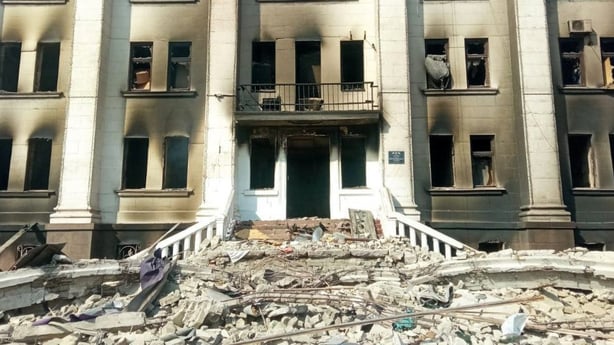Civilians trapped in dire conditions in Mariupol, a strategically important city in southeastern Ukraine that has been besieged by Russian forces for the past month, are waiting for buses sent to rescue them after Moscow announced a local ceasefire.
Some 160,000 people remain in the beleaguered port city on the Sea of Azov which Russian forces have encircled and shelled since the end of February in what the European Union has decried as a war crime.
A city encircled
On 2 March, a week after the start of the Russian invasion, Moscow's artillery begins pounding Mariupol, a predominantly Russian-speaking city of 441,000 inhabitants some 55 kilometres from the Russian border and 85 kilometres from the pro-Russia separatist stronghold of Donetsk.
The mayor accuses Russian forces and pro-Russian fighters of looking to "impose a blockade" by cutting off food supplies and vital infrastructure, including water, electricity and heating.
Taking control of the city would allow Russia to link up its forces in the Crimea peninsula, which it annexed in 2014, with the occupied ports of Berdyansk and Kherson and the separatist region of Donbas further to the north.

Maternity ward bombed
On 9 March, Russia targets a building housing a maternity ward and paediatric hospital in the city, killing three people including a young girl.
Ukraine and the European Union condemn what they term a "war crime" while Russia claims the building is sheltering Ukrainian nationalists.
First evacuations
Mid-March sees the start of the evacuation of thousands of civilians from the city via a humanitarian corridor.
Early attempts to bring people out founder amid mutual recriminations between the warring sides.
Theatre destroyed
On 16 March, Russian airstrikes raze a theatre providing shelter to around 1,000 people, according to Ukrainian authorities who estimate a death toll of around 300.
Moscow denies the attack, blaming Ukraine's far-right Azov nationalist battalion.

Refusal to surrender
On 21 March, Kyiv rejects a Russian ultimatum to Ukrainian forces to surrender Mariupol or face being court-martialed or worse.
"Today Mariupol is saving Kyiv, Dnipro and Odessa. Everyone must understand this," Ukraine's Defence Minister Oleksiy Reznikov says, crediting the city with playing "a huge role in destroying the enemy's plans and enhancing our defence".
Civilians who manage to undertake a highly perilous escape in their own vehicles describe leaving behind a "freezing hellscape riddled with dead bodies and destroyed buildings", according to Human Rights Watch.
Ceasefire, more evacuations
On Wednesday, Moscow announces a local ceasefire starting from 10 am local time (0700 GMT) Thursday to allow the establishment of a humanitarian corridor between Mariupol and the Ukrainian-controlled city of Zaporizhzhia, via the Russian-held port of Berdyansk.
Ukraine's Deputy Prime Minister Iryna Vereshchuk says the government is sending 45 buses to evacuate residents.

